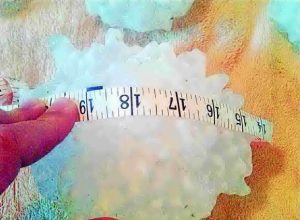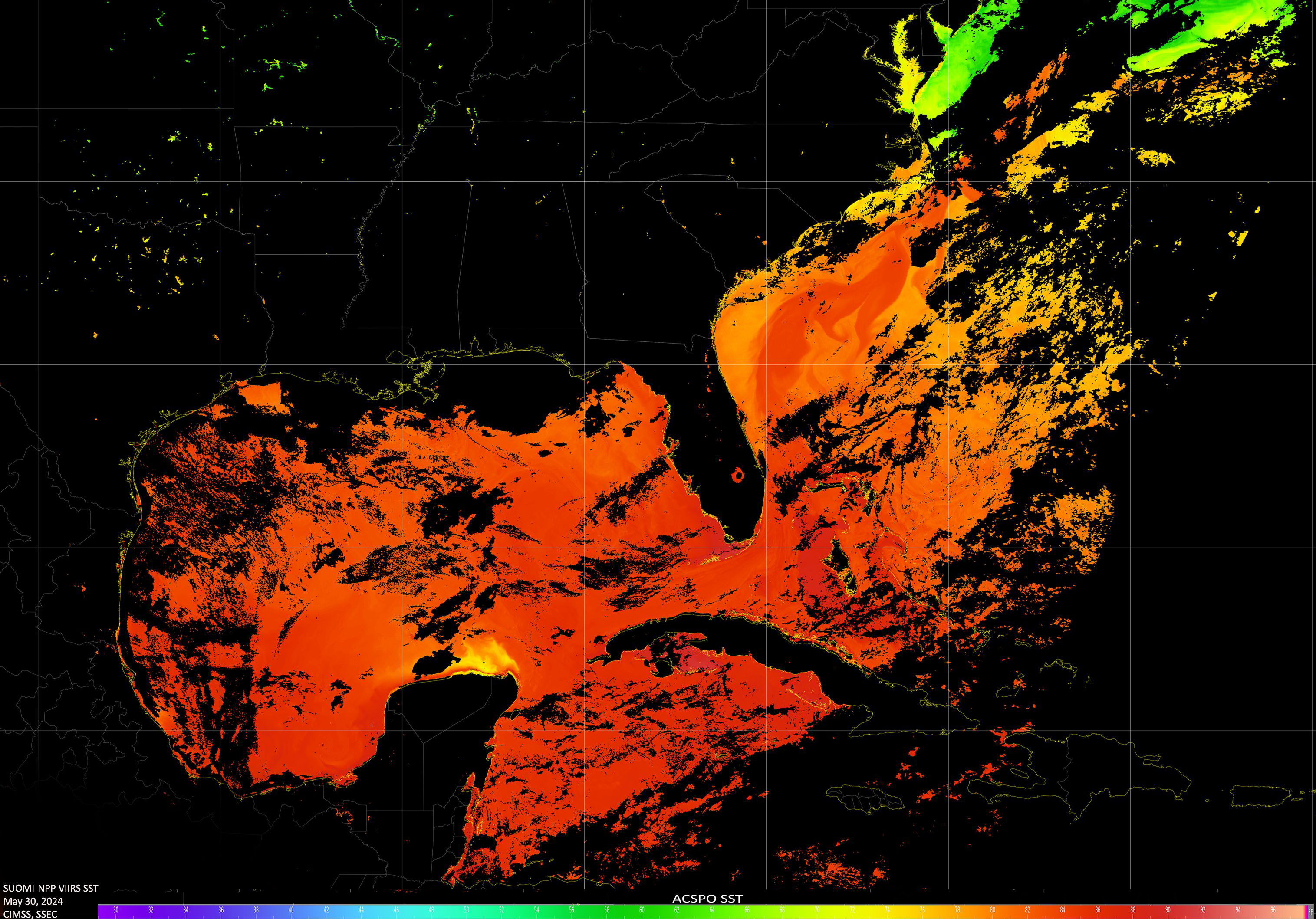A hailstone was found in Vigo Park, Texas, on June 2 that measured 7¼ inches in diameter.

However, that is not the record size hailstone for the U.S. That prize stone fell on July 23, 2010, near Vivian, South Dakota. It was 8 inches in diameter and weighed just over 1.9 pounds. The official record hailstone for Wisconsin fell in Wausau in 1921 and measured 5.7 inches. The world’s heaviest hailstone weighed 2.25 pounds and fell in Bangladesh in April 1986. Its diameter was not recorded.
Growth of large hail requires strong upward motions and an abundant supply of supercooled water. A hailstone of 4.5 inches needs at least 100 mph of updraft to keep it suspended in the storm. Eventually, though, the weight of the hailstone overcomes the strength of the updraft, and the stone falls to earth.
When a hailstone is cut in half, you can see rings of ice. Some rings are milky white; others are clear. This ringed structure indicates that hailstones grow by two different processes: wet growth, represented by the clear layers, and dry growth, which forms the milky white layers. The number of layers gives an indication of how many times the hailstone cycled through the storm.
Dry growth of hailstones occurs when the air temperature is well below freezing. In these conditions, a water droplet freezes immediately as it collides with the hailstone. This quick freezing leads to air bubbles being trapped in place, leaving cloudy ice. In wet growth, the hailstone is in a region of the storm where the air temperature is below freezing but not very cold. When the hailstone collides with a drop of water, the water does not freeze on the ice immediately. Instead, the liquid water spreads over the hailstone and slowly freezes. Because the water freezes slowly, air bubbles can escape, resulting in a layer of clear ice.
Steve Ackerman and Jonathan Martin, professors in the UWMadison department of atmospheric and oceanic sciences, are guests on WHA radio (970 AM) at 11:45 a.m. the last Monday of each month. Send them your questions at stevea@ssec.wisc.edu or jemarti1@ wisc.edu.





